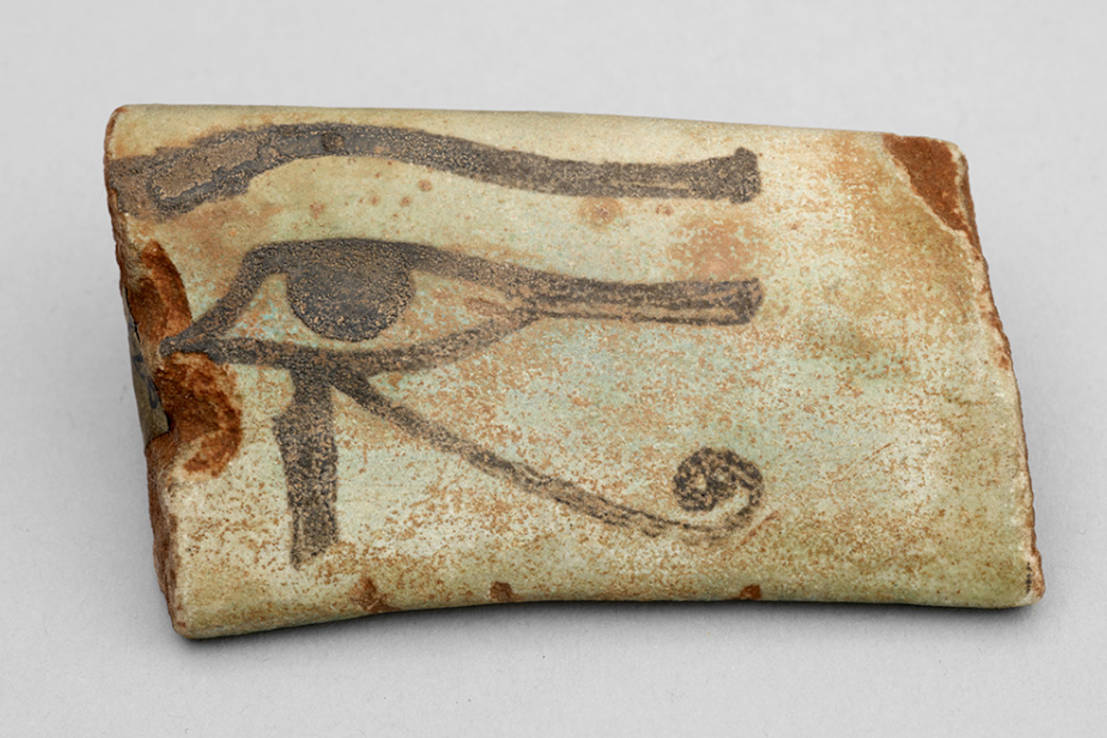
in Español / Spanish translated by Cristina
This object has been translated into 12 different languages by 15 different users
Este es el Ojo de Horus, a veces conocido como el ojo wedjat, usado como un símbolo popular de protección en el Antiguo Egipto. El dios Horus es representado como un halcón. En la mitología del Antiguo Egipto, Horus pierde su ojo en una lucha contra su rival Seth, quien mató al padre de Horus, Osiris. El ojo fue repuesto por el dios Thoth, y convertido en wedjat, lo que significa “el todo” o “la salud”.
Se convirtió en un popular símbolo de protección, particularmente de la muerte, y fue usado especialmente hace 3000 años, desde el Antiguo Reino hasta la era romana. El Ojo de Horus también fue usado en culturas vecinas, como la culturas canaanite, siria y nubia.
¿Hay algún objeto que guardes que te de suerte o especial protección?
Do you have something you’d like to say, in your own language or English, about the object or translation? We’d like to hear what you think.
Translations are community-sourced and for anyone to participate in, however you use your language. For more information, see Community Guidelines.
19 Dec, 2025
Do you have a spam issue on this blog; I also am a blogger, and I was curious about your situation; we have developed some nice methods and we are looking to exchange solutions with others, please shoot me an email if interested.
http://www.vorbelutrioperbir.com
23 Sep, 2023
Italians, especially in southern Italy, are well known for their attachment to superstition. Therefore, it is not surprising that good-luck charms are particularly popular. Arguably, the most popular amulet is the “cornicello” or “cornetto” (meaning “little horn”). The amulet is believed to protect against “malocchio” (“evil eye”), and it is commonly found in the Italian regions of Campania, Lazio, Puglia, and Basilicata.
The cornetto is in the shape of a horn, and it can be made from metal, but it is most commonly red in colour. This makes them look very similar to chilli pepper, but it is meant to represent an eland horn. The cornetto finds its origin in Greek and Roman mythology as it is linked to another common symbol: the cornucopia. The cornucopia, also known as the “horn of plenty” is a symbol of abundance and it is commonly illustrated as a large horn-shaped container overflowing with fruits and flowers. Similarly, the cornetto is also associated with abundance and fertility and remains one of the most common Italian symbols of protection. If you ever go to Naples, you can be certain to see at least one cornetto be worn as jewellery, hung from the rearview mirrors of a car, or kept in a house for decor and good luck.